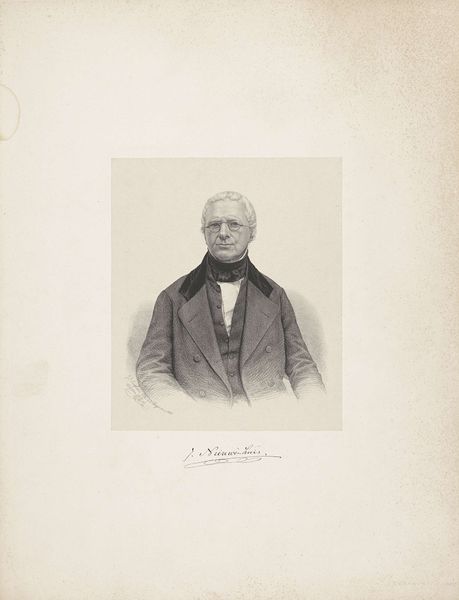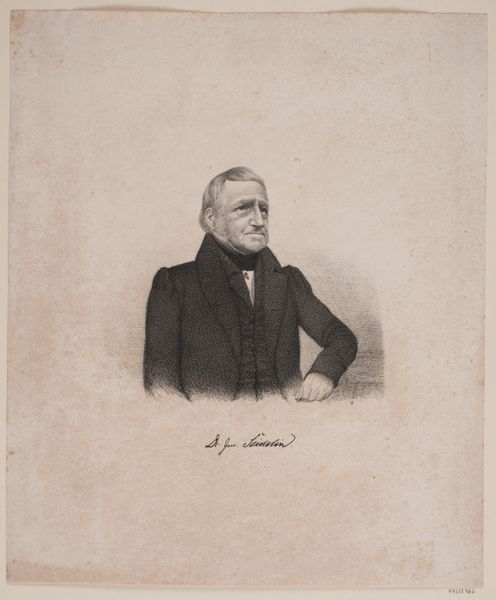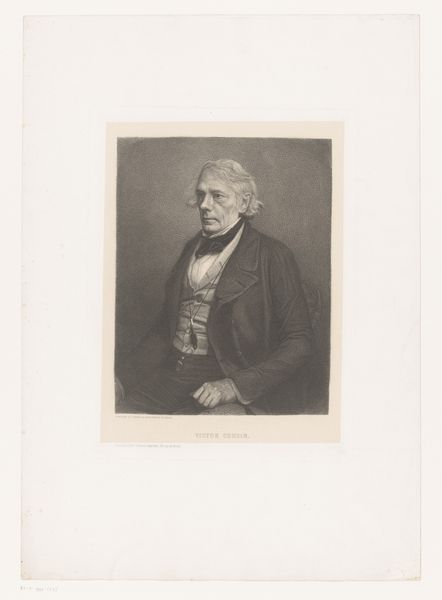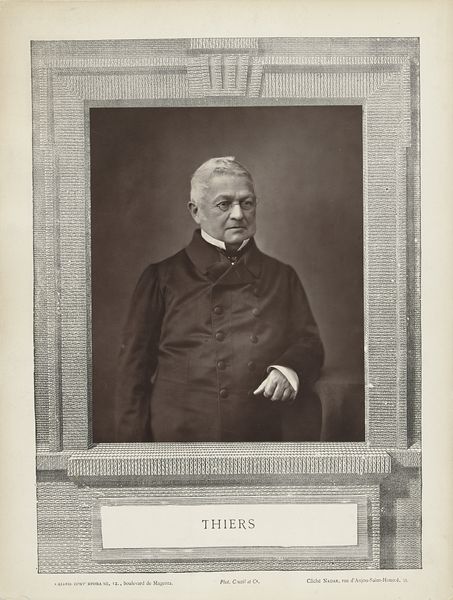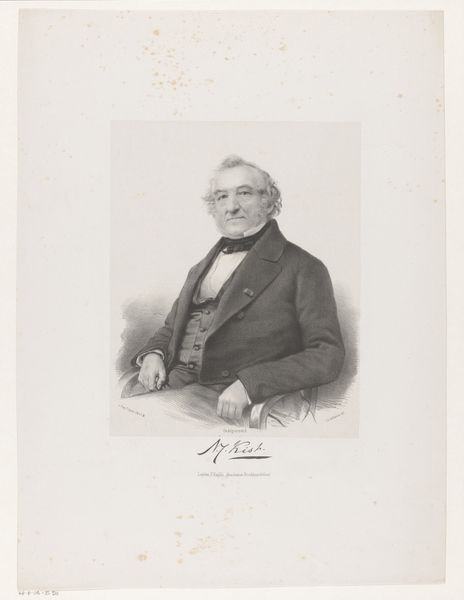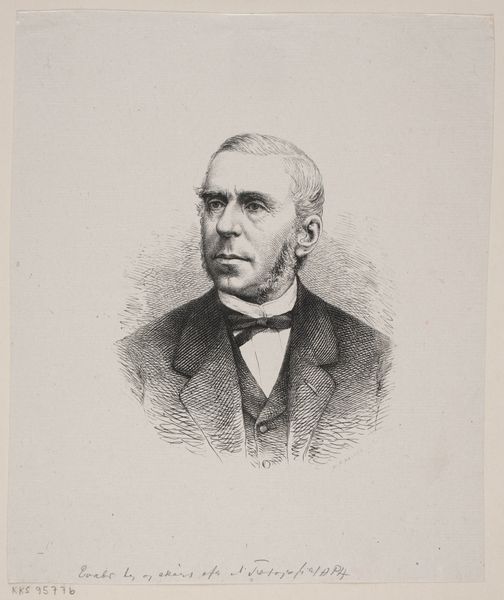
Dimensions: 19.8 × 15 cm (image, oval); 34 × 26 cm (mount)
Copyright: Public Domain
Curator: This daguerreotype by Nadar, dating to around 1858, portrays the French playwright Eugène Scribe. It’s currently held in the collection of The Art Institute of Chicago. Editor: My first impression is one of introspection. There’s a somber quality to the lighting and the man's pose, hand to his face, which creates a very private atmosphere. The oval vignette concentrates the gaze. Curator: Nadar, as a key figure in Parisian artistic circles, sought to elevate photography to the level of high art, in line with the Romantic spirit of the time. This image is part of that effort to capture the essence of important figures in society. Scribe, a hugely popular playwright, represents that. Editor: Absolutely. Consider the tonal range: Nadar masterfully exploits the delicate gradation from light to shadow, using tonality as the essential building blocks. The detail in his face contrasts starkly with the blurry coat, emphasizing his expression. Curator: The daguerreotype process itself was significant, demanding a stillness and solemnity that influenced the image's final mood. The rising middle class craved portraits and connection to cultural idols such as Scribe. Nadar shrewdly met their demand, which significantly popularized both him and photography. Editor: Yes, and even that slight blurring serves the composition. It emphasizes the textures: the silky sheen of his lapel, the slightly rougher surface of his face, it draws attention to the materiality. It brings forward Scribe. Curator: In his role, Scribe’s work had immense societal impact, mirroring, and shaping popular opinion. To portray him meant conferring artistic prestige upon photography. This image solidifies that association for the audience. It made a bold statement regarding who and what was artistically important in the cultural narrative of France. Editor: For me, seeing this, it’s Nadar's orchestration of light and shadow which gives depth, allowing for visual expression beyond just representation. The balance, between what's sharply in focus and the more ambiguously defined areas, lends a lot of intrigue. Curator: Ultimately, it’s a powerful record, intertwining art, personality, and the aspirations of a rapidly changing society. Editor: Agreed, the daguerreotype allows for reflection not just on the sitter, but on Nadar’s own capabilities as an artist and manipulator of light.
Comments
No comments
Be the first to comment and join the conversation on the ultimate creative platform.



